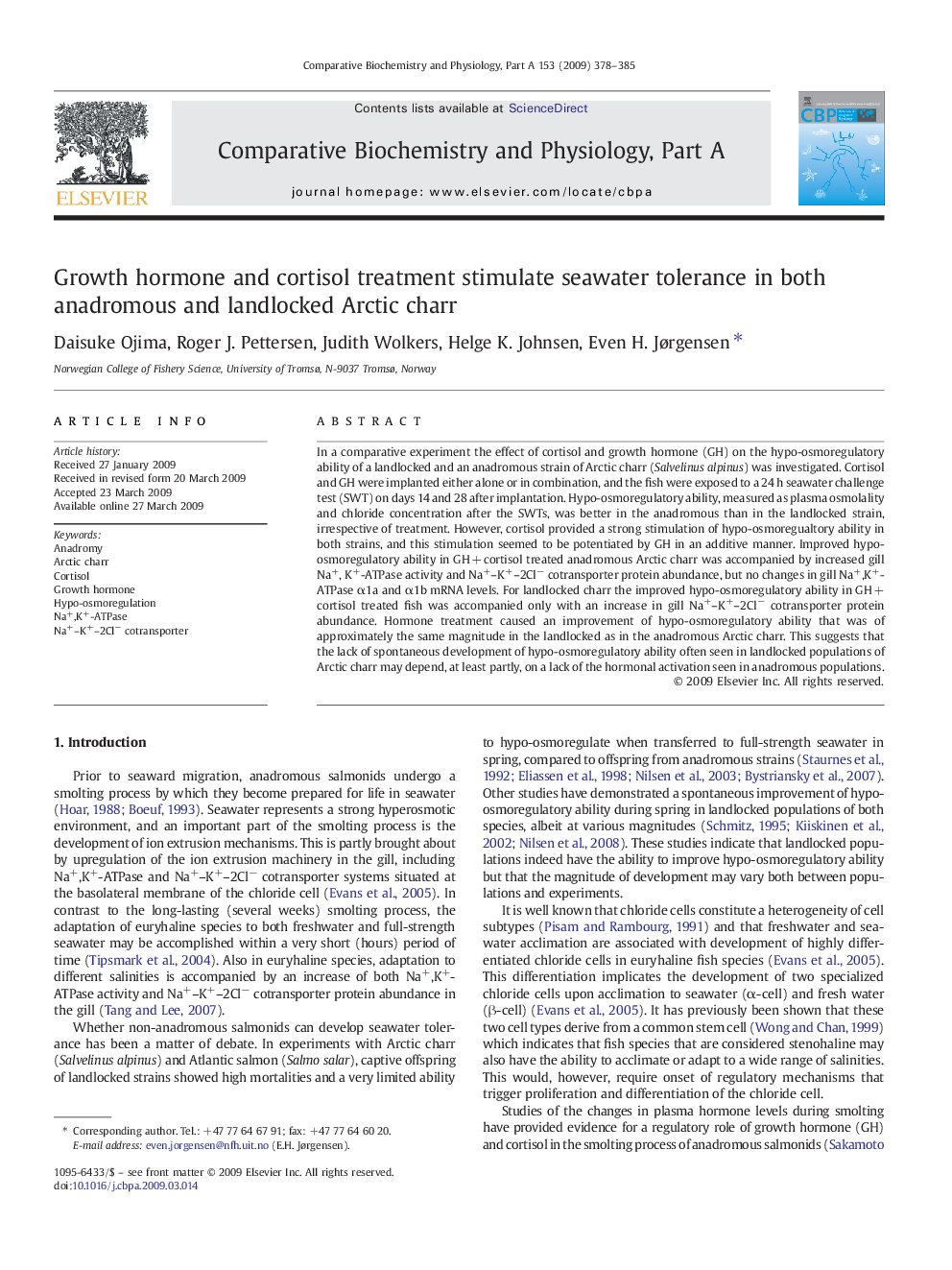| Article ID | Journal | Published Year | Pages | File Type |
|---|---|---|---|---|
| 1972782 | Comparative Biochemistry and Physiology Part A: Molecular & Integrative Physiology | 2009 | 8 Pages |
In a comparative experiment the effect of cortisol and growth hormone (GH) on the hypo-osmoregulatory ability of a landlocked and an anadromous strain of Arctic charr (Salvelinus alpinus) was investigated. Cortisol and GH were implanted either alone or in combination, and the fish were exposed to a 24 h seawater challenge test (SWT) on days 14 and 28 after implantation. Hypo-osmoregulatory ability, measured as plasma osmolality and chloride concentration after the SWTs, was better in the anadromous than in the landlocked strain, irrespective of treatment. However, cortisol provided a strong stimulation of hypo-osmoregualtory ability in both strains, and this stimulation seemed to be potentiated by GH in an additive manner. Improved hypo-osmoregulatory ability in GH + cortisol treated anadromous Arctic charr was accompanied by increased gill Na+, K+-ATPase activity and Na+–K+–2Cl− cotransporter protein abundance, but no changes in gill Na+,K+-ATPase α1a and α1b mRNA levels. For landlocked charr the improved hypo-osmoregulatory ability in GH +cortisol treated fish was accompanied only with an increase in gill Na+–K+–2Cl− cotransporter protein abundance. Hormone treatment caused an improvement of hypo-osmoregulatory ability that was of approximately the same magnitude in the landlocked as in the anadromous Arctic charr. This suggests that the lack of spontaneous development of hypo-osmoregulatory ability often seen in landlocked populations of Arctic charr may depend, at least partly, on a lack of the hormonal activation seen in anadromous populations.
